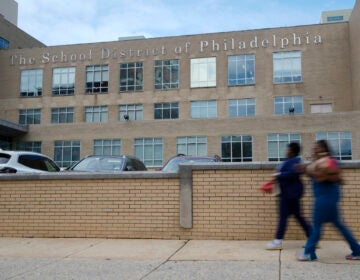Will widespread Philadelphia school closings mean end of neighborhood assignment?
In order to close as many as one fifth of the city’s traditional public schools by the fall of 2013, Philadelphia district officials are considering some dramatic steps, including a move away from the traditional system of assigning students to schools based on their home address.
Also on the table are eliminating traditional middle schools and closing some poor-performing schools located in adequate facilities in order to preserve stronger academic programs elsewhere. All told, as many as 57 schools could be shuttered over the next few years.
Chief Recovery Officer Thomas Knudsen told about 75 parents and community representatives at a Tuesday morning forum that the district has no choice but to take aggressive action.
“These school closures represent the opportunity for us to save about $30 to $35 million a year and put those resources towards the kinds of educational programs that we all want for children,” said Knudsen. “It is that simple a calculus.”
But identifying which schools should be closed is sure to be both complicated and controversial. To help inform those decisions, the district is hosting a series of seven public meetings to gather input on how officials should balance “competing objectives” in three big areas.
The first area is how students should be assigned to schools.
Deputy for Strategic Initiatives Danielle Floyd said the District wants guidance from parents on whether they’d rather be assigned neighborhood schools they can count on, or given access to a number of good school options that might not be within walking distance of their homes.
Right now, said Floyd, most K-8 students opt to attend their neighborhood schools. But more than half of the city’s public high school students do not attend their assigned neighborhood high school.
“As a parent or a guardian, how much flexibility are you comfortable with?” she asked.
Audience members responded using real-time polling technology, punching buttons on devices that look like remote controls to give their views. Taken as a whole, the group expressed support for a middle ground – keeping neighborhood assignment for younger students, but moving towards a full choice-based system for high school-aged students.
The district is also wrestling with what to do about good schools located in bad buildings. That dilemma was highlighted last spring when public outcry led the School Reform Commission ultimately to spare E.M. Stanton and Sheppard elementary schools from recommended closure.
“We really have two ways we can go about this,” said Floyd.
The first option, she said, would be to close the older building and reassign its students to better facilities nearby, regardless of the quality of the respective schools’ educational programs. That strategy could result in students moving from a high-performing school to a less successful one.
Or, the district could prioritize protecting strong academic programs. This would likely mean closing poorly-performing schools in better facilities so that the nearby higher-performing school could move there.
What to do with middle grades is the third big. Some communities have expressed strong support for K-8 schools, said Floyd, while others prefer “true middles” serving just grades 6 through 8.
Right now, she said, the district has 23 standalone middle schools, many of which are housed in woefully underutilized facilities.
“We really want to get your perspective on how should the district be thinking about management of that sixth-through-eighth grade experience,” said Floyd.
Audience polling indicated group support for a “case-by-case” approach. It was the third such compromise solution born from the district’s feedback strategy, perhaps giving a clue as to the directions school officials are hoping to take.
No specific schools were discussed at the forum; district officials said they expect to announce their recommendations for closure in November, with an SRC vote tentatively slated for March.
Along with SRC Chairman Pedro Ramos and Commissioner Wendell Pritchett, new Superintendent William Hite was on hand for the forum.
Hite echoed the SRC’s stance that widespread school closures are needed to save money and reduce the “stranded costs” that have resulted from a decade-long exodus of students from district schools to charter schools.
“Every dime that’s spent somewhere else, like an empty seat or heating a room that is not in use, is a dime away from classrooms or students,” said Hite.
Audience polling indicated that roughly a third of those in attendance were community members or representatives of interest groups. Twenty-eight percent were parents, and 16 percent came from outside Philadelphia. More than two-thirds had attended previous meetings about the district’s “facilities master plan.”
The district’s forums are being sponsored by groups including the Philadelphia Education Fund, Parent Power, and the Philadelphia Right to Education Local Task Force.
“We have been extremely impressed with the sincerity with which both the district and the SRC has approached this task,” said Darren Spielman, executive director of the Philadelphia Education Fund. “We fully endorse the process.”
A team from the Boston Consulting Group attended Tuesday’s forum, but did not speak and were not publicly recognized.
Last month, the district released a 119-page document detailing a number of the management consulting firm’s analyses and findings, including a recommendation to close between 29 and 57 schools in time for the 2014 fiscal year.
WHYY is your source for fact-based, in-depth journalism and information. As a nonprofit organization, we rely on financial support from readers like you. Please give today.




